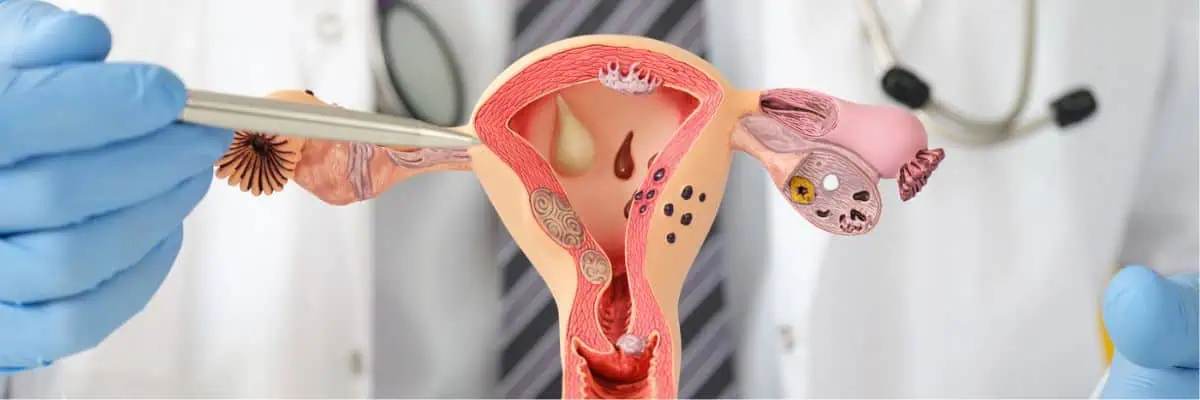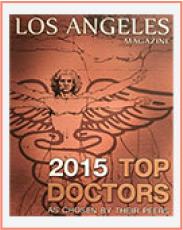What is salpingitis?
Salpingitis is inflammation of the fallopian tubes. It occurs when pathogens ascend through the cervix and endometrium and eventually reach the fallopian tubes.
Salpingitis is associated with pelvic inflammatory disease (PID) and is commonly caused by sexually transmitted infections (STI), such as chlamydia and gonorrhea.

Acute and chronic salpingitis
Salpingitis can be diagnosed as either acute or chronic.
Acute salpingitis is an infection of the fallopian tubes. It occurs when the fallopian tubes become inflamed and secrete fluid, causing the inside walls to stick to each other and to other nearby tissue. One or both tubes may fill with pus. In rare cases, they could rupture and cause peritonitis, a severe infection of the pelvic cavity.
Chronic salpingitis is a milder form of the inflammation that lingers after acute salpingitis. It typically lasts longer but produces fewer symptoms.
What are the risk factors for salpingitis?
Women can develop inflammation of the fallopian tubes following a miscarriage or childbirth or any number of medical procedures.
The following may put you at an increased risk:
- The insertion of intrauterine devices (IUD)
- Endometrial biopsy
- Dilation and curettage
- Hormonal changes by menstruation
- Retrograde menstruation
However, the most common cause is a bacterial infection caused by sexually transmitted diseases. Up to 1 out of every 5 cases of Chlamydia trachomatis or Neisseria gonorrhea can progress to salpingitis if left untreated.
Chlamydia and gonorrhea are very easy to spread through sexual contact, partially because they often present with no symptoms. For this reason, salpingitis is the most common serious infection for women ages 16-25. It affects around 12% of women before the age of 20.
Other infections that can cause salpingitis include Mycoplasma, Staphylococcus, and Streptococcus.
What are the symptoms of salpingitis?
Often, cases of salpingitis are asymptomatic. They may be caught during a regular pelvic examination. When symptoms do appear, they typically begin after your period, and can include:
- Pelvic pain, especially during ovulation and menstruation
- Abdominal pain
- Bloating
- Changes in the color or smell of vaginal discharge
- Lower back pain
- Fever
- Nausea or vomiting
- Painful sexual intercourse
- Frequent urination
What are the complications of salpingitis?
If left untreated, salpingitis can cause serious health problems:
- Chronic pelvic pain
- Chronic abdominal pain
- Secondary infection: spread of infection to other areas of the body, including the uterus, ovaries, and other pelvic organs. Additionally, the infection-causing salpingitis could be transmitted to your sexual partner(s).
- Infertility. Tubal scarring, adhesion, and blockages may lead to infertility.
- Tubo-ovarian abscesses: These pus-filled pockets can develop on the fallopian tube or ovary during salpingitis. Most respond to antibiotic treatment, but if they are very large or don’t respond to antibiotics, they may need to be drained with a special needle guided by ultrasound. In severe cases, the doctor may need to remove the infected fallopian tube or ovary surgically.
- Risk of Ectopic Pregnancy Salpingitis increases the likelihood of an ectopic pregnancy – when the fertilized egg implants in the fallopian tube instead of the uterus. This condition is life-threatening, and the pregnancy cannot be carried to term.
Diagnosing Salpingitis
It’s always important to keep your annual appointments with your gynecologist. Additionally, if you are sexually active and have changed partners since your last STI test, it’s highly recommended that you get another STI check.
It may be easy to confuse acute salpingitis with other causes of abdominal pain, such as appendicitis, ectopic pregnancy, kidney infection, ovarian cysts, or endometriosis.
If your healthcare provider suspects you have salpingitis, they may conduct one of the following tests to diagnose the condition:
- Pelvic exam
- Blood test
- Mucus swab/bacterial culture
- Laparoscopy
What are the treatments for salpingitis?
Salpingitis and its related infectious causes can usually be treated with antibiotics. This treatment is successful in about 85% of cases.
However, salpingitis may require hospitalization in more severe cases, where antibiotics can be administered intravenously. In rare cases, surgery may be necessary.
Have questions about your health? Talk to Dr. Aliabadi
Dr. Aliabadi and her compassionate team are experts in women’s health care. When treated by Dr. Aliabadi, you’re guaranteed to feel safe, heard, and well cared for.
We invite you to establish care with Dr. Aliabadi. Please make an appointment online or call us at (844) 863-6700.
The practice of Dr. Thais Aliabadi and the Outpatient Hysterectomy Center is conveniently located for patients throughout Southern California and the Los Angeles area. We are near Beverly Hills, West Hollywood, Santa Monica, West Los Angeles, Culver City, Hollywood, Venice, Marina del Rey, Malibu, Manhattan Beach, and Downtown Los Angeles.
Sources
Invited review: Systematic review of diagnostic tests for reproductive-tract infection and inflammation in dairy cows1 – Journal of Dairy Science.
https://doi.org/10.3168%2Fjds.2013-7450
inflammatory disease (PID).
https://www.merckmanuals.com/professional/gynecology-and-obstetrics/vaginitis,-cervicitis,-and-pelvic-inflammatory-disease/pelvic-inflammatory-disease-pid
Prolonged use of intrauterine contraceptive device as a risk factor for tubo-ovarian abscess. Acta Obstet Gynecol Scand. 2009. Charonis G, Larsson PG.
https://pubmed.ncbi.nlm.nih.gov/19412803/
















